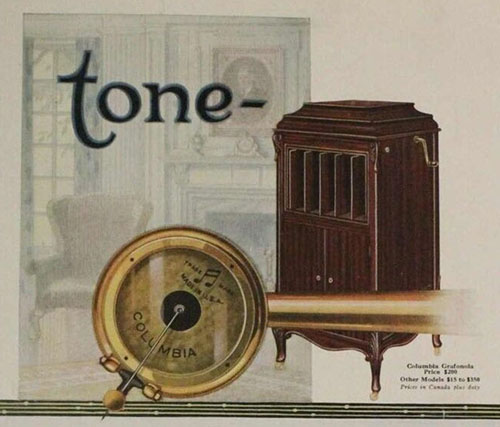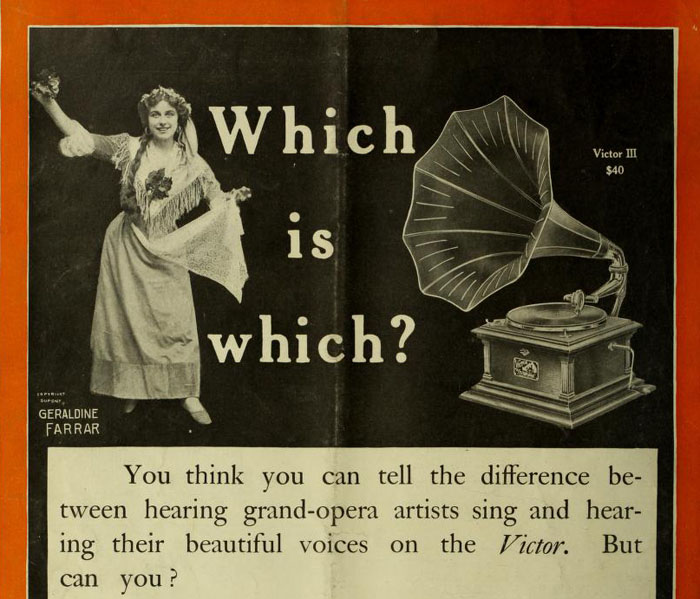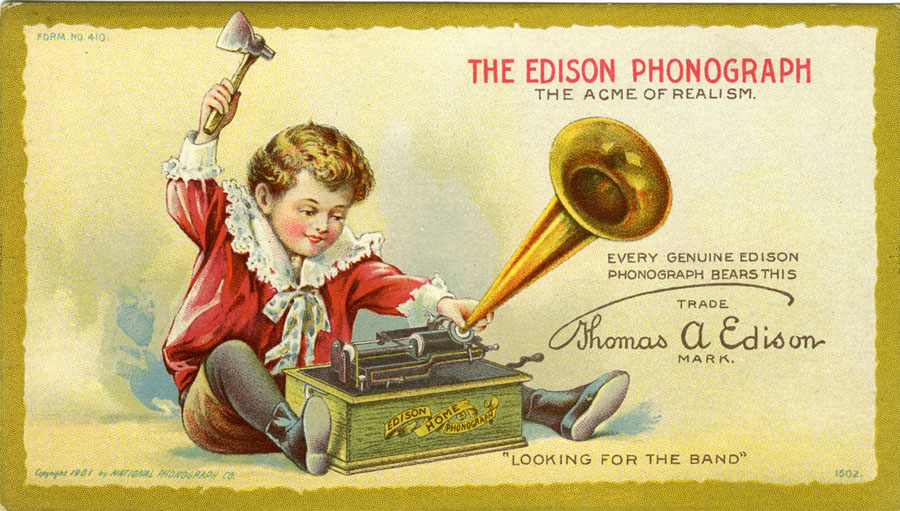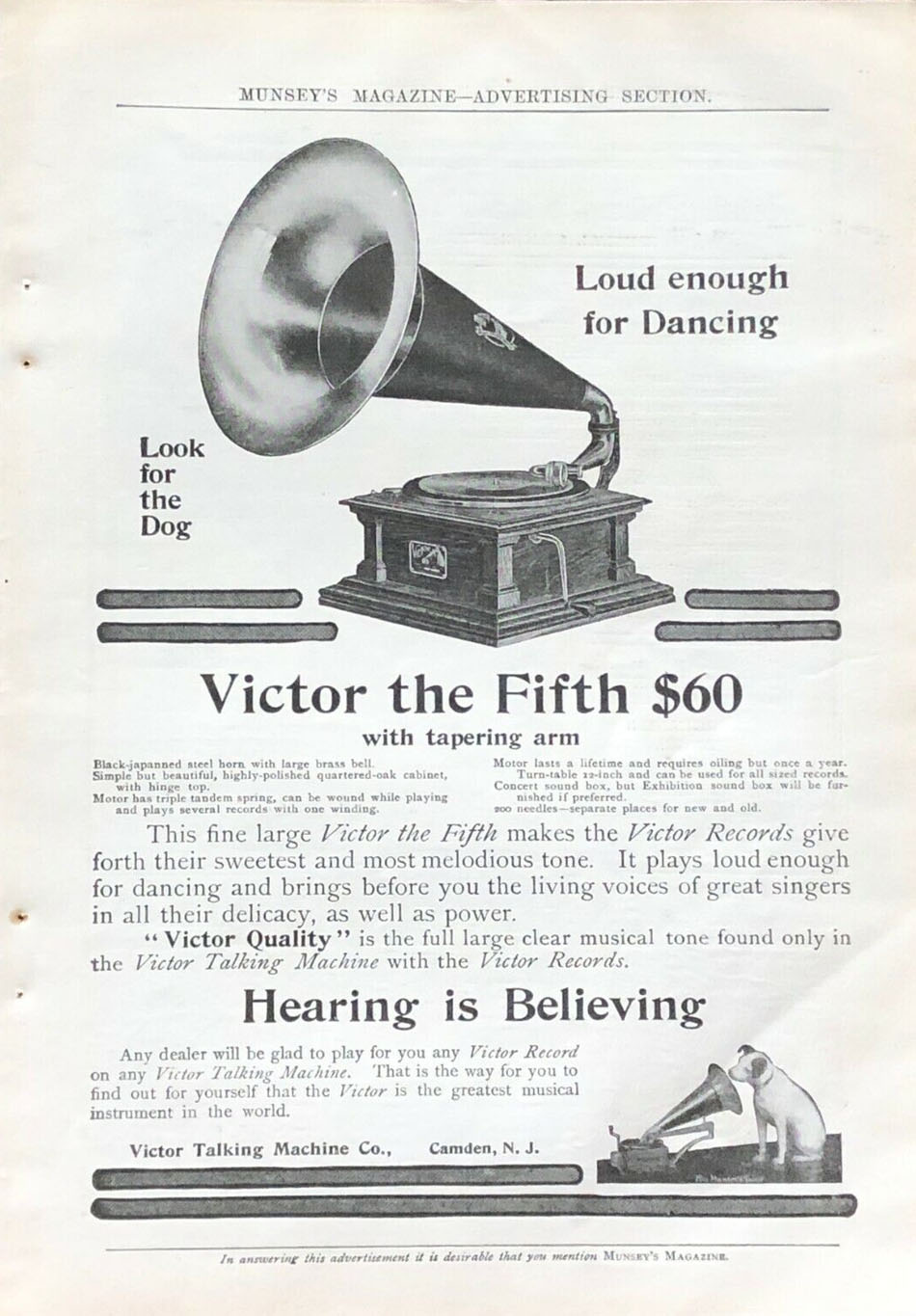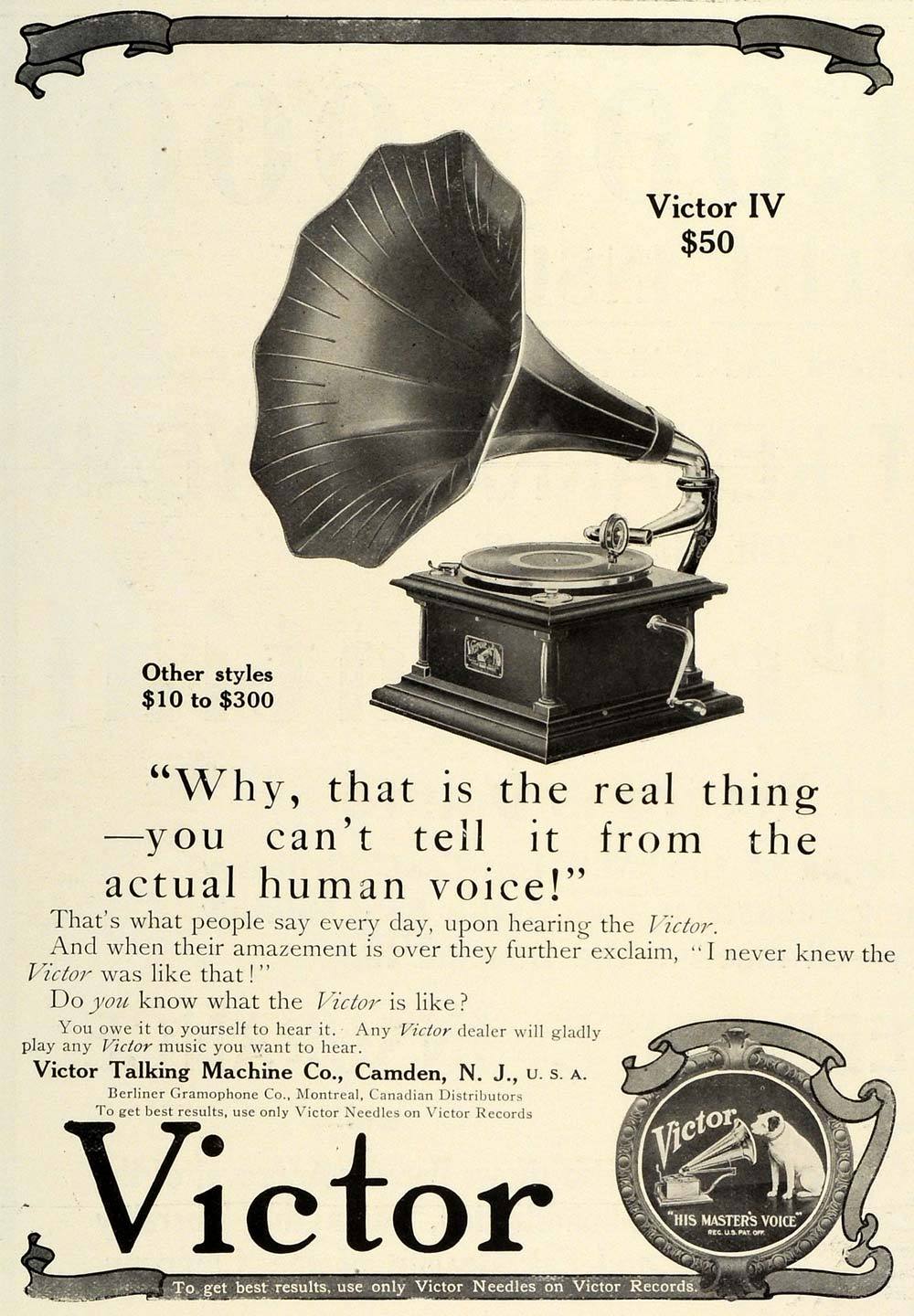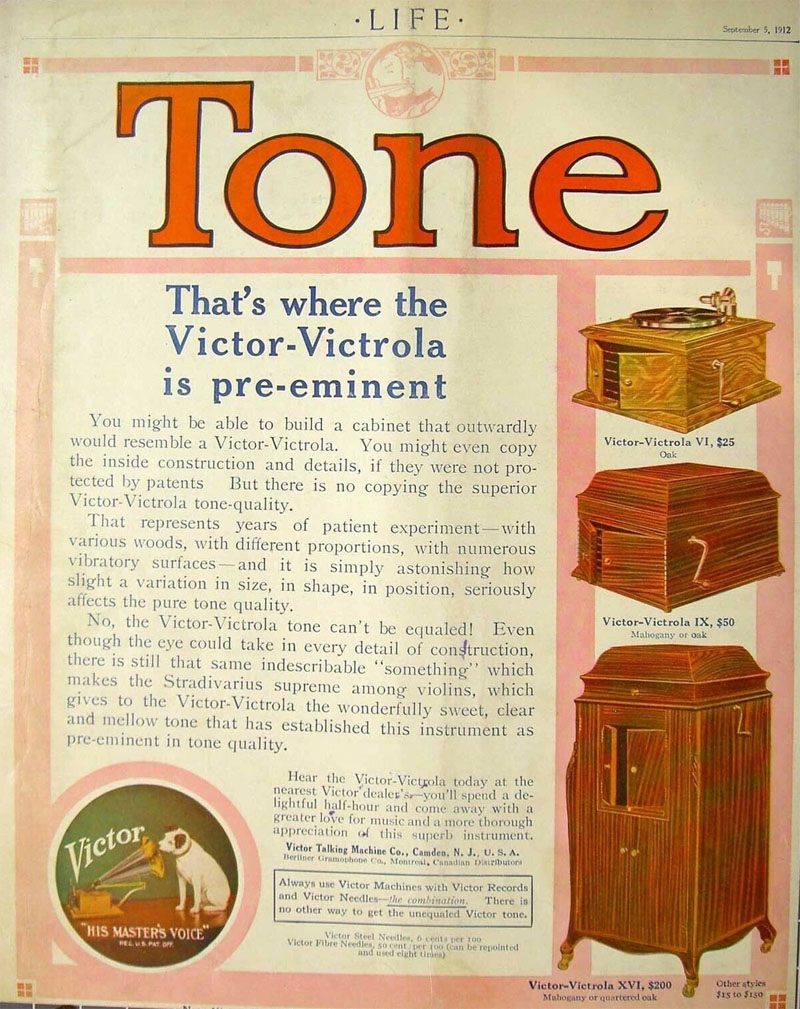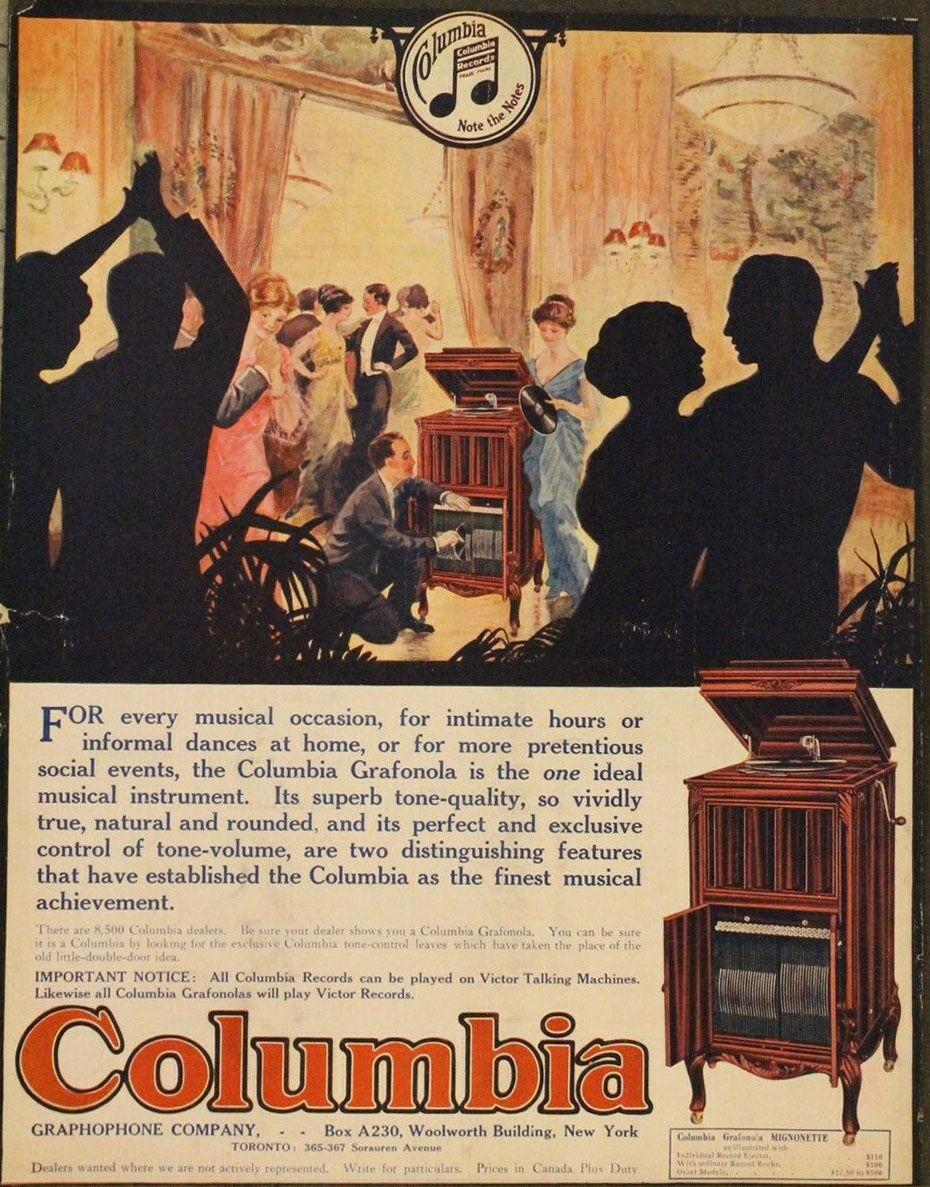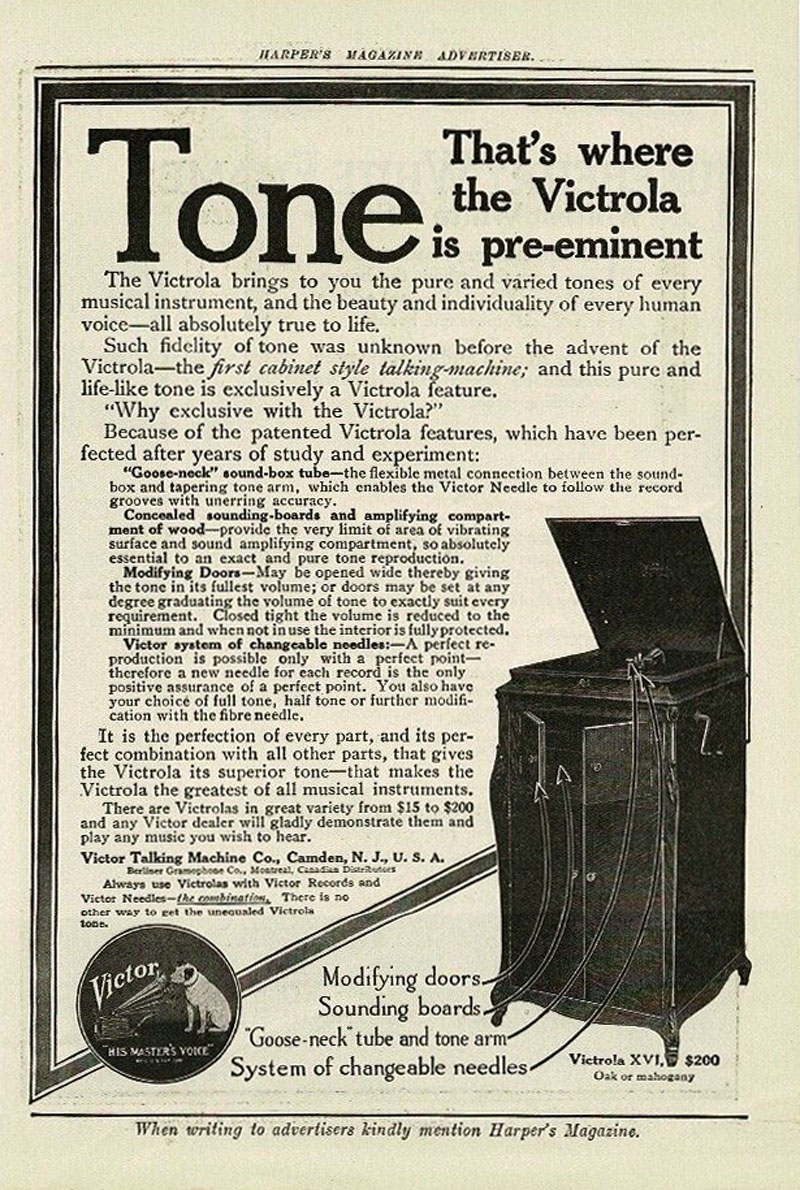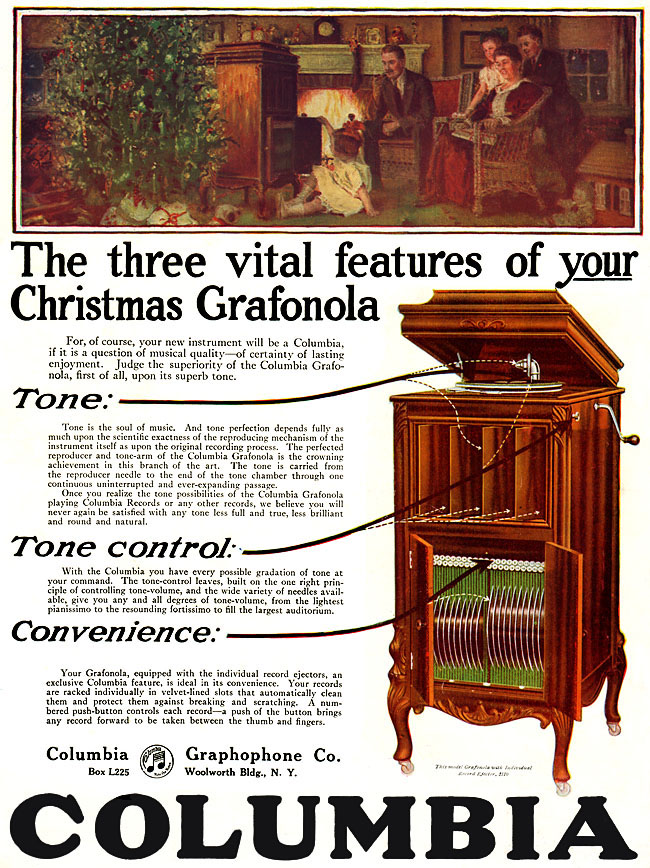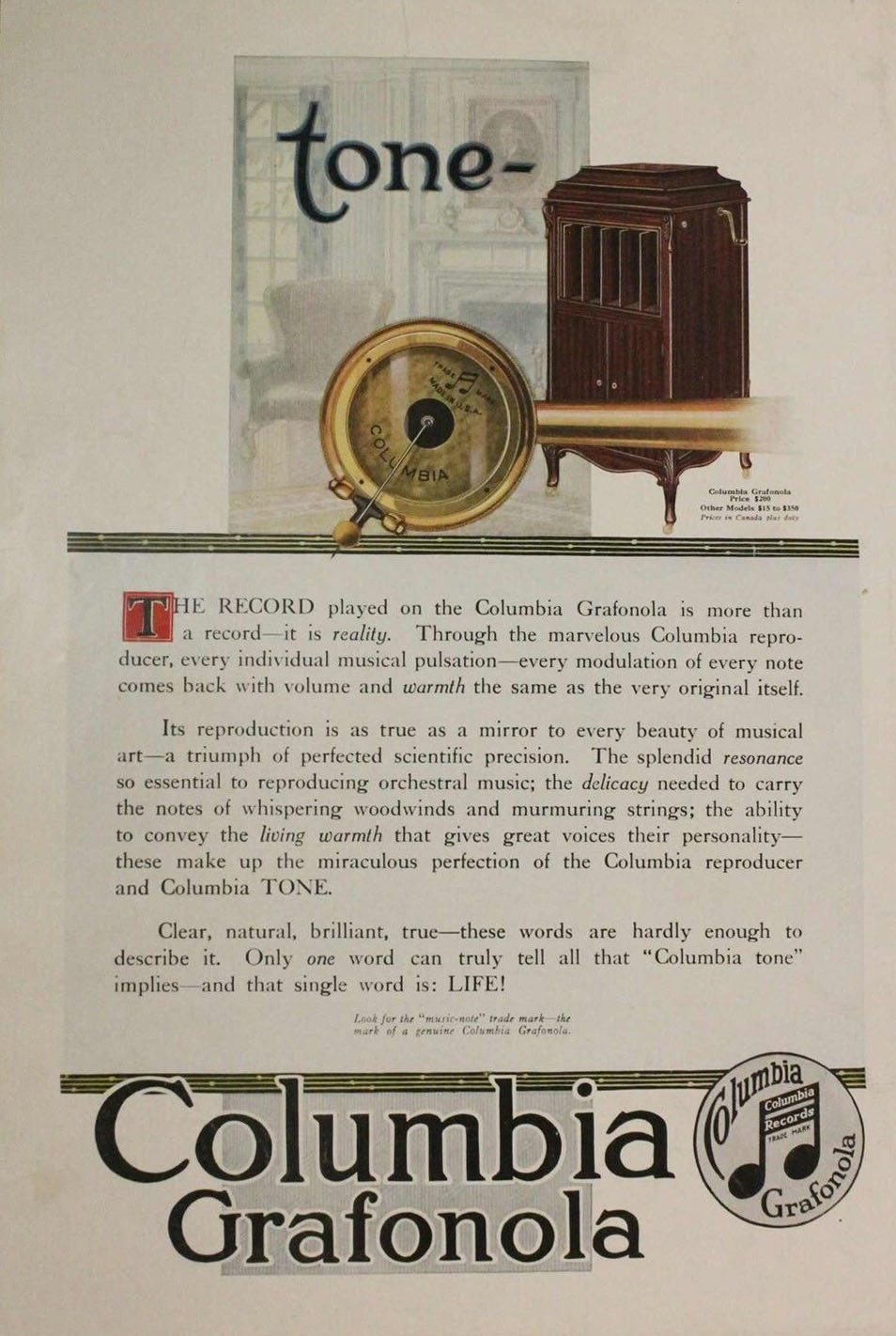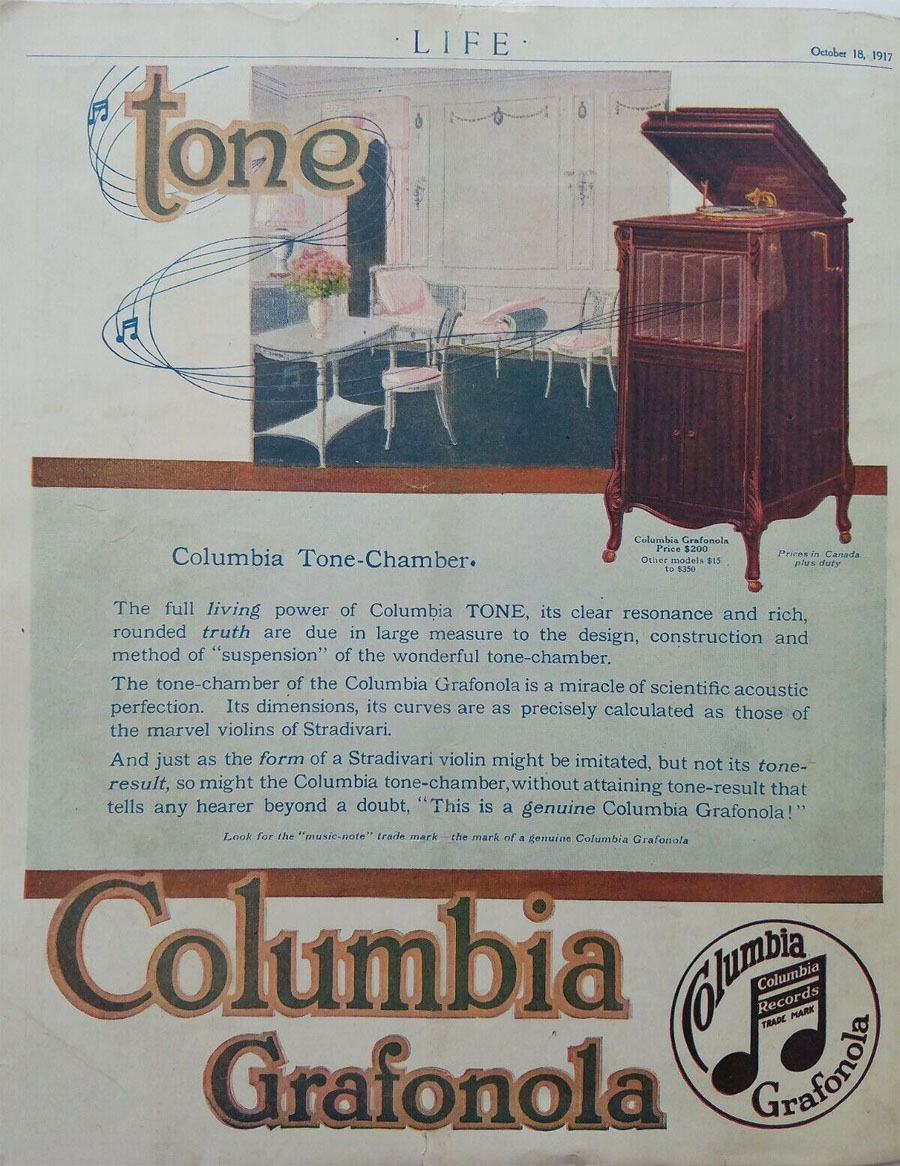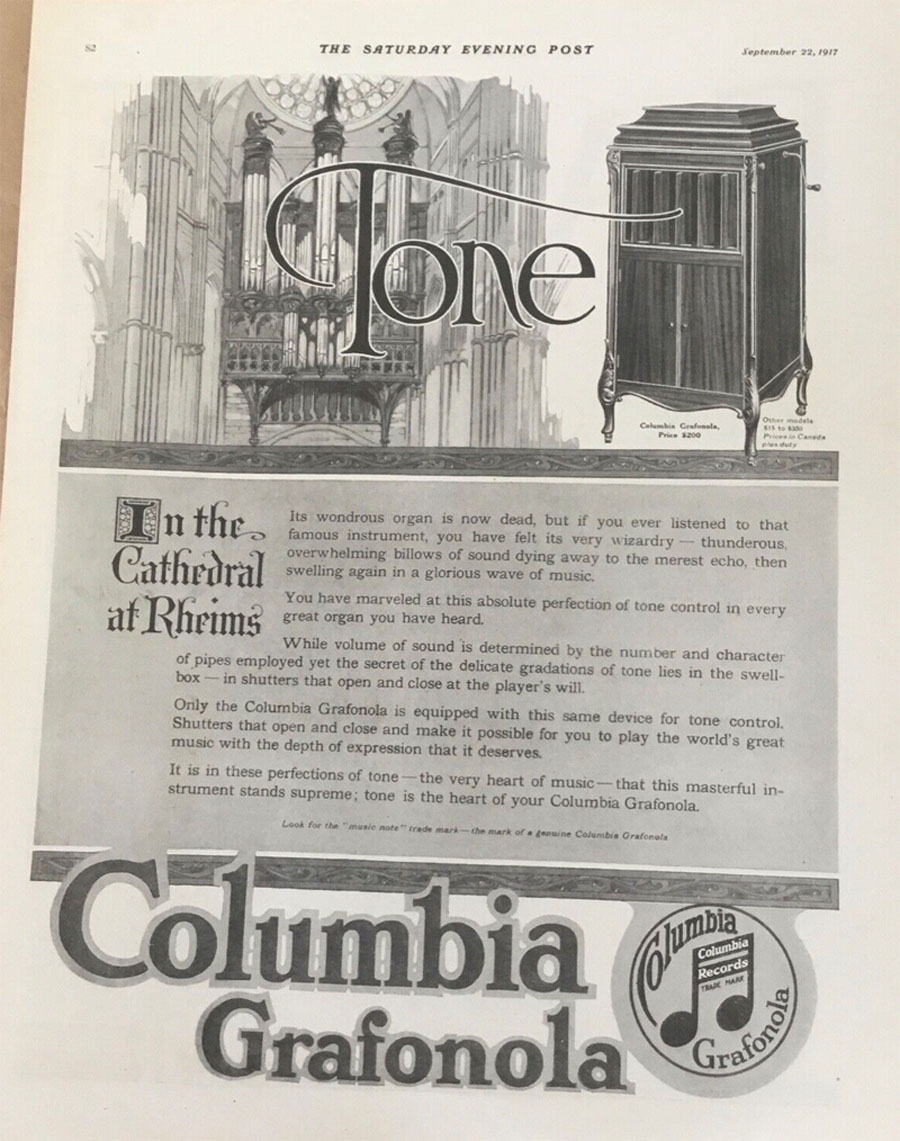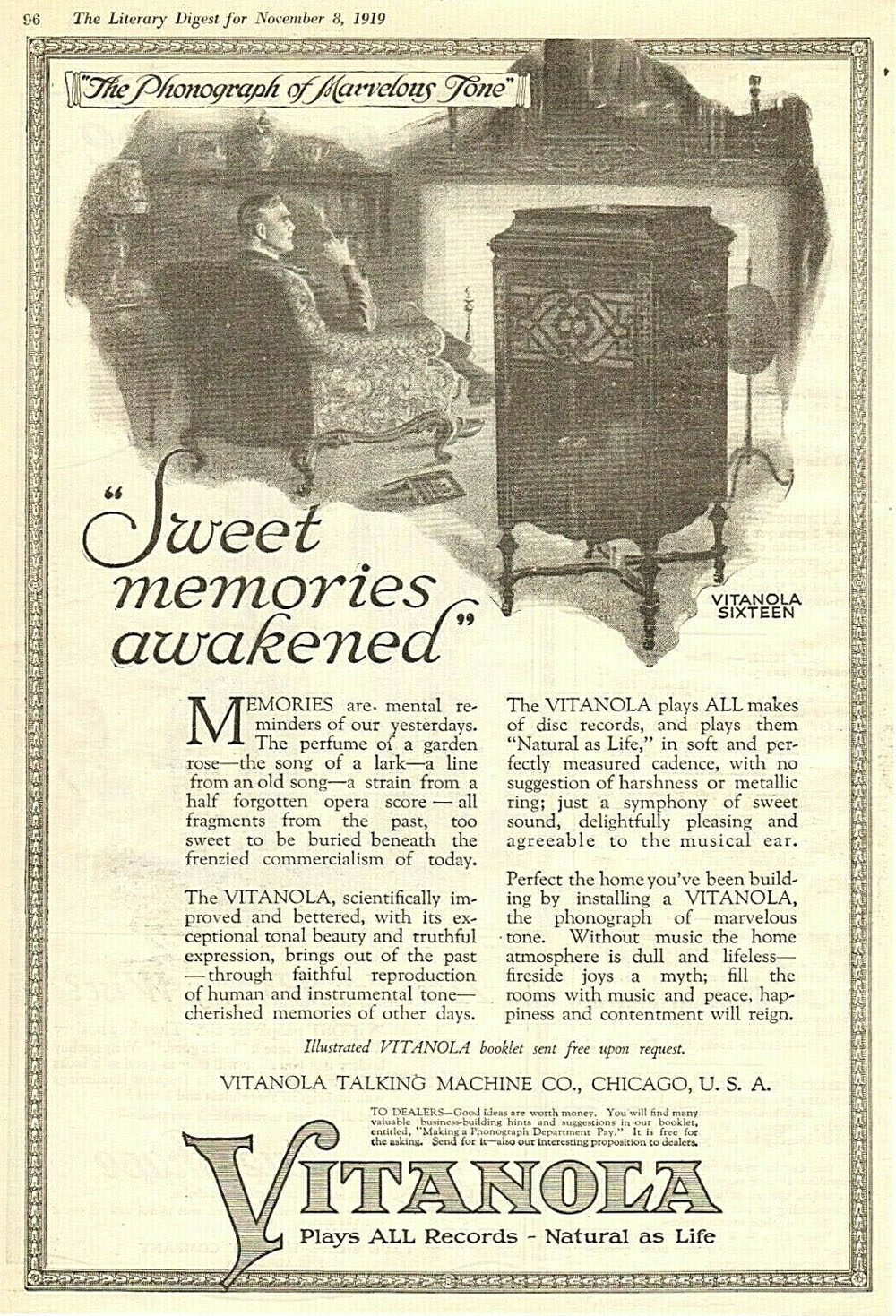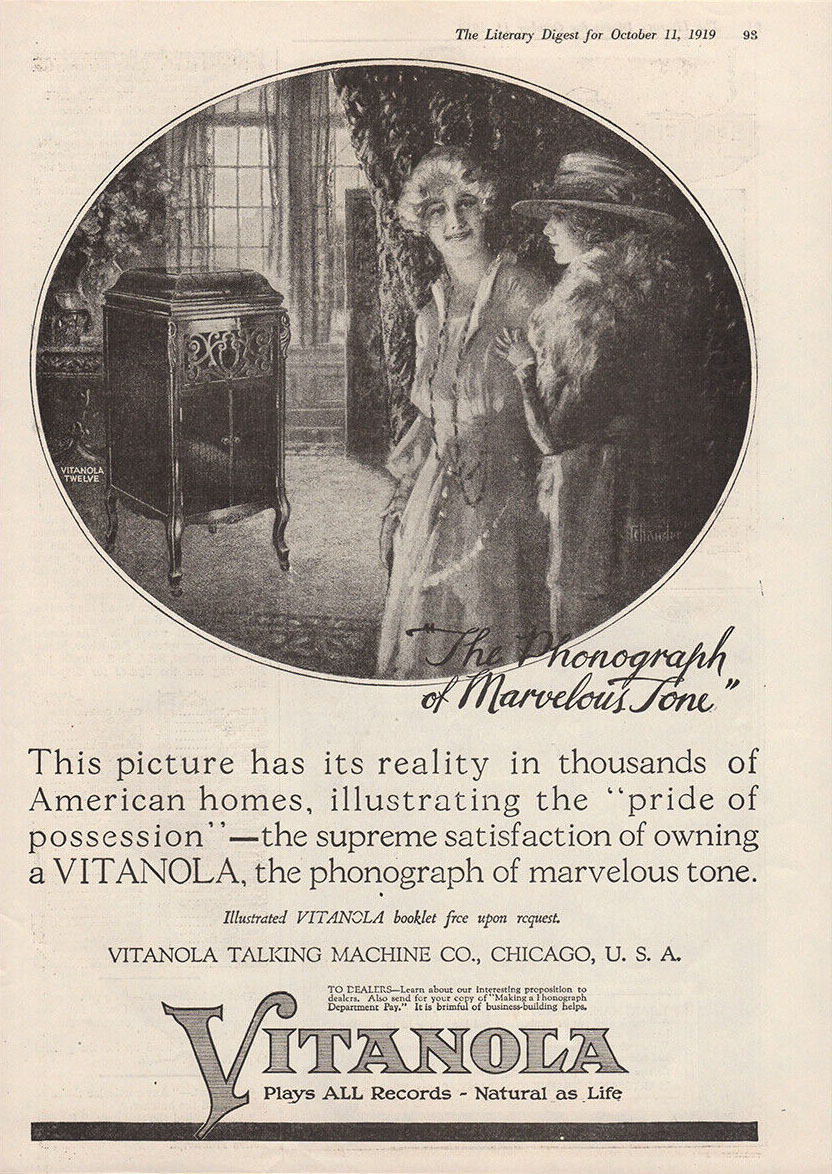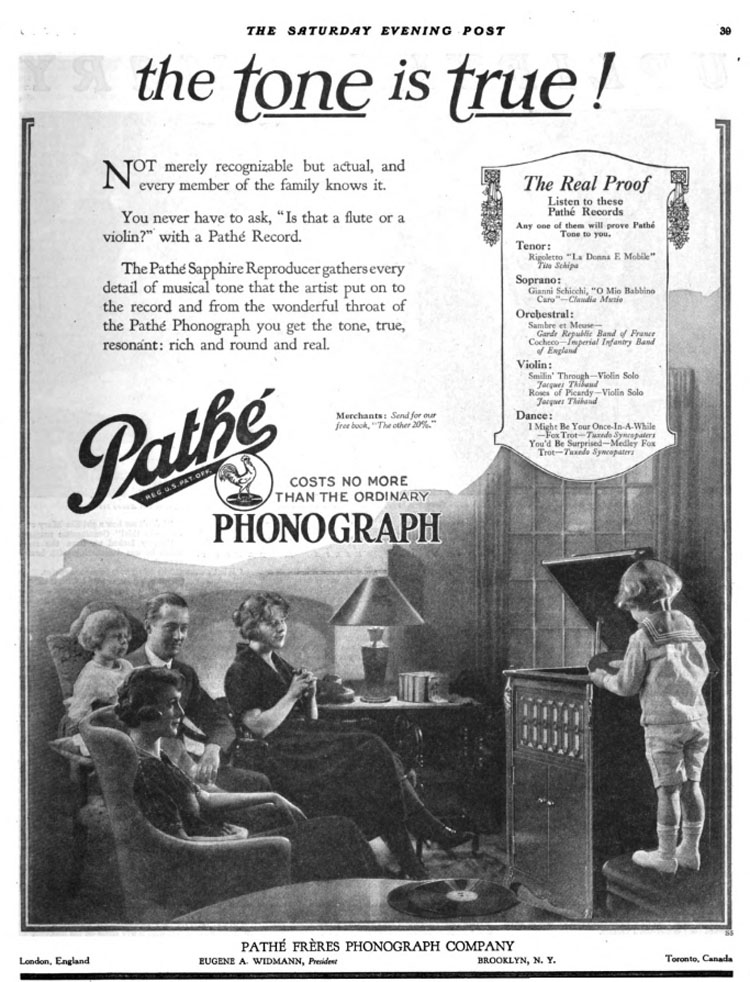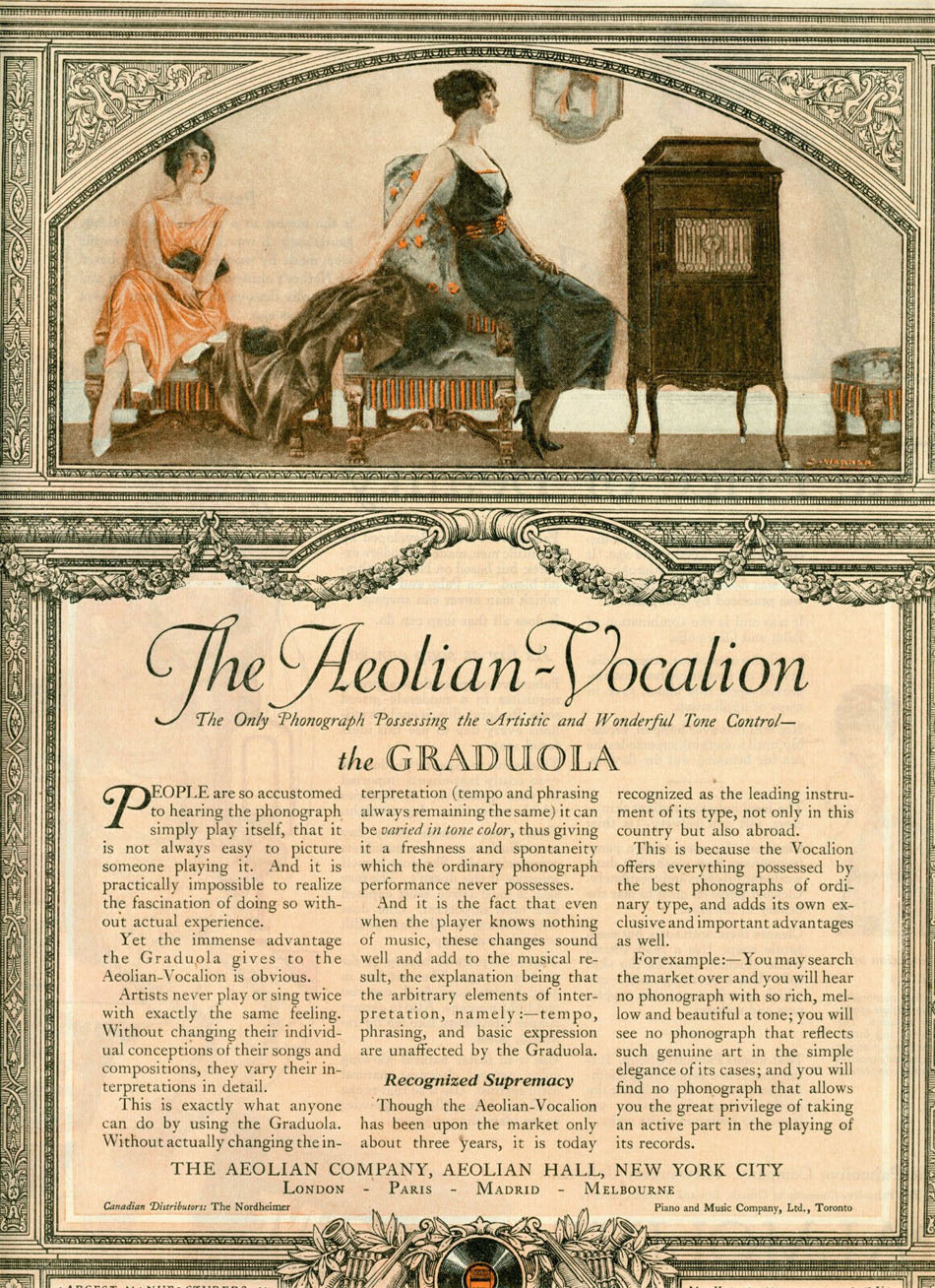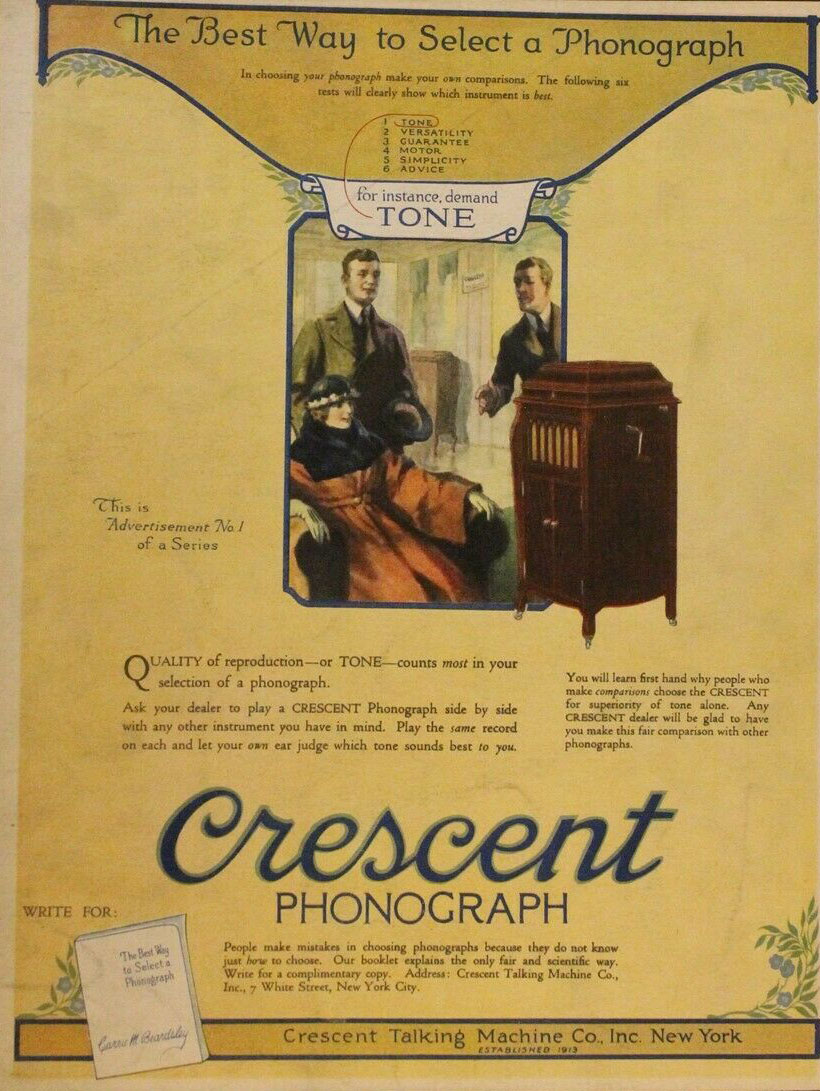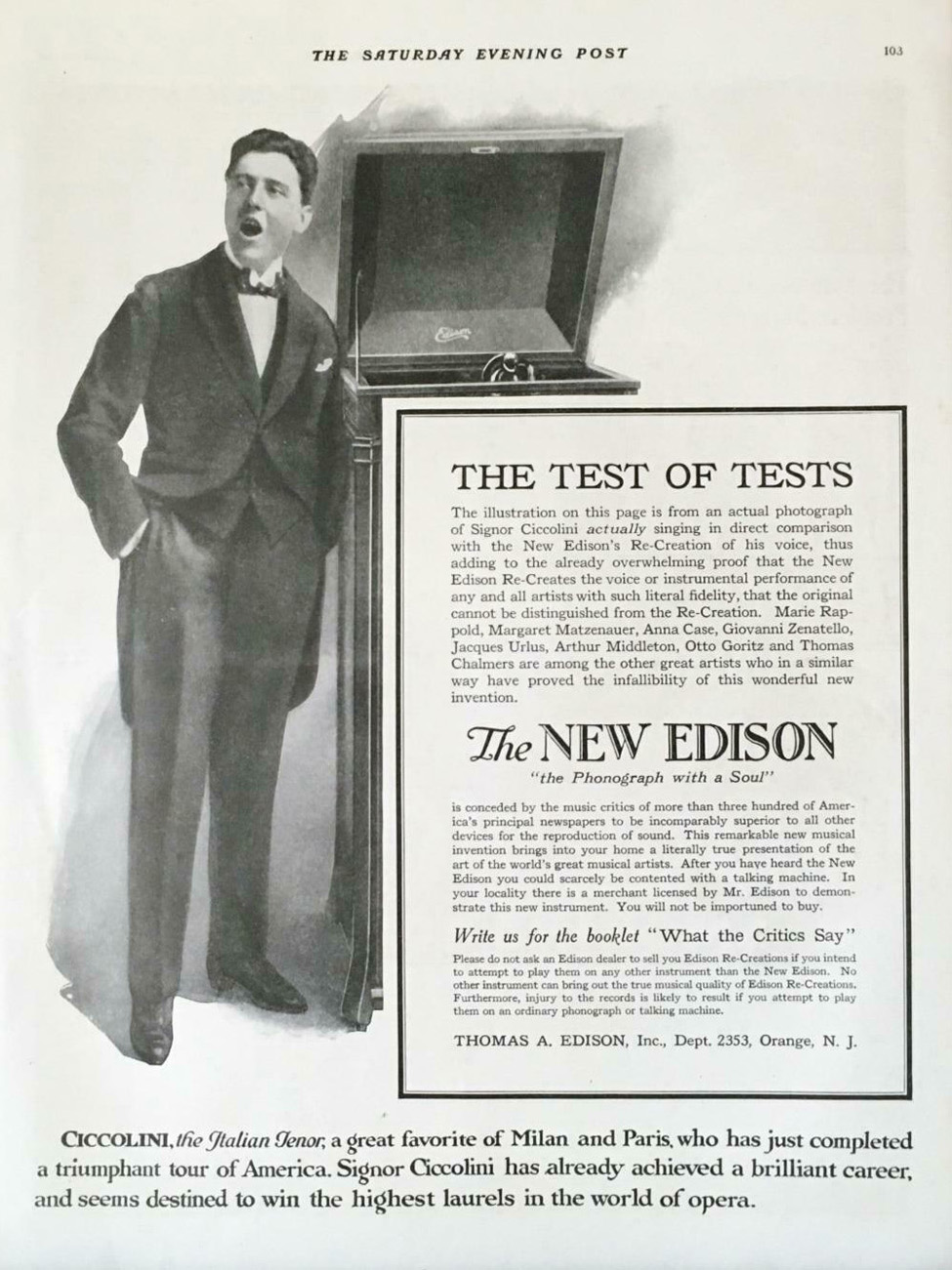Tone, Fidelity and Realism in Phonograph Ads
By Doug Boilesen, 2022
When the phonograph first became a consumer item and cheaper, spring wound phonographs began to be marketed in 1895 as a home entertainer its ads focused on simple themes: it laughs, talks, sings and can repeat your own voice or song; it plays loudly and clearly; it was easy to operate.
The diversity of what it could play was a theme in ads before 1900 and those entertainment options often didn't include specifics about the identity of the actual performing artists. The public, however, would soon read the names of performers like John Atlee, the artistic whistler, Russell Hunting and his "Casey" stories, Cal Stewart and his Uncle Josh Weathersby stories of Punkin Center, Dan Quinn, George Gaskin and the "world-renowned U.S. Marine Band" and associate them with their records.
Caruso and the Metropolitan's divas were not yet part of the "limitless reportoire" that an 1897 Columbia Graphophone ad said was now available. Instead, this early reportoire was often advertised as music "rendered by celebrated orchestras and bands, vocal and instrumental music, recitations, speeches, etc."
As phonograph's and recordings improved some opera stars started making records. Caruso's records first released in 1902 were a significant event for the future of the industry with more advertising soon focused on the prestige of opera and its prima donnas. The quality of sound was also assumed to be better since Caruso and other stars were making records and the advertising language of tone, fidelity and realism likewise soon appeared. The "Which is which" advertising campaign by Victor in 1907 was an early question asking consumers to think about the difference between life performances and records and suggesting maybe they couldn't really tell the difference.
By 1915 tone, fidelity, and life-like realism had apparently become more believable possibilities for phonograph advertisers to be able to emphasize.
The following are a few examples including the Edison Tone Tests which was the most extensive and focused advertising campaign to promote those themes.
"The Edison Phonograph The Acme of Realism"
Edison Advertising Form No. 410, c. 1901 (PM-0262)
"The sweetest and most melodious tone...full, large clear musical tone."
"Hearing is Believing" Victor Talking Machine Company, Munsey's Magazine, 1905
"Why, that is the real thing! You can't tell it from the actual human voice."
Victor - "you can't tell it from the actual human voice!" 1909
"Tone - That's where the Victor-Victrola is pre-eminent" Life, September 5, 1912
"The Columbia Grafonola is the one ideal musical instrument. It's superb tone quality, so vividly true, natural and rounded, and it's perfect and exclusive control of tone-volume..."
"The Columbia Grafonola is the one ideal musical instrument" for every musical occasion, 1915
"Tone - That's where the Victrola is pre-eminent...with pure and varied tones of every musical instrument...Such fidelity of tone was unknown before the advent of the Victrola..."
"Tone - That's where the Victrola is pre-eminent, Harper's Magazine, 1915
"Tone is the soul of music. And tone perfection depends fully as much upon the scientific exactness of the reproducing mechanism of the instrument itself as upon the original recording process...Once you realize the tone possibilities of the Columbia Grafonola...we believe you will never again be satisfied with any tone less full and true, less brilliant and round and natural."
Columbia for your 1915 Christmas, 1915
"tone - The record played on the Columbia Grafonola is more than a record--it is reality."
"The Record played on the Columbia Grafonola is more than a record -- it is reality." 1917
Columbia Grafonola Tone - Life, October 1917
"Tone - these perfections of tone - the very heart of music...tone is the heart of your Columbia Grafonola." The Saturday Evening Post, September 1917
The VITANOLA, "The Phonograph of Marvelous Tone" plays all disc records "Natural as Life," in soft and perfectly measured cadence, with no suggestion of harshness or metalic ring."
"Sweet Memories Awakened," Vitanola, The Literary Digest for November 8, 1919
The VITANOLA, "The Phonograph of Marvelous Tone.""The pride of possession - the supreme satisfaction of owning a VITANOLA, the phonograph of marvelous tone." The Literary Digest for October 11, 1919The Saturday Evening Post, May 8, 1920
Aeolian-Vocalion offered the Gradulola for "Artistic and Wonderful Tone Control"
The Aeolian-Vocalion with its "Graduola" allows you in your own home "the great privilege of taking an active part in the play of its records." You are able to vary "in tone color" the artists' performances with the "Artistic and Wonderful Tone Control - the Graduola. 1921
The Best Way to Select a Phonograph - Tone
"Let your own ear judge..."
"Quality of reproduction -- or TONE -- counts most in your selection of a phonograph." Crescent Talking Machine Co., 1928Edison's Tone TestsThe Edison's Tone Tests are the best example of using tone and fidelity in an extensive and focused advertising campaign to promote those themes.
Edison's Tone Test ‘recitals’ from 1915 to 1925 were intended to demonstrate that audiences could not tell the difference between his Diamond Disc recordings and the live performances. Edison's Re-Creation of voices was said to have demonstrated with "overwhelming proof" the "literal fidelity" of Edison's records. The Tone Test Recitals were the source of countless Edison ads.
Since tone, fidelity, and realism were also critical for one to believe that there was no difference between live performances and recordings, and to believe that artists could seemingly be present in your home for these performances see The Stage of the World and its associated advertising examples promoting the phonograph's revolution of home entertainment.
The Saturday Evening Post, 1917
For more details about Edison's Tone Tests see Phonographia's Edison Tone Tests.
